On September 27, 1442, John de la Pole was born. While Margaret Beaufort would have wanted to forget this and the marriage was annulled in 1453, John did marry her when she was just seven years old. After the annulment, John went onto marry Edward IV’s sister, Elizabeth of York, and was a strong supporter of the York cause during the War of the Roses.

Birth of John de la Pole: Arguably the First Husband of Margaret Beaufort
John de la Pole was the husband of a prominent Lancastrian woman and Yorkist woman. His wise decisions helped him to gain popularity in the English court and set his future up well
The Early Life of John de la Pole, 2nd Duke of Suffolk
John de la Pole married Margaret Beaufort when she was just seven years old. It's a marriage that was later annulled and something she didn't want to remember.
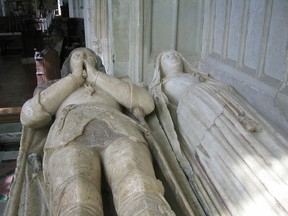 De la Pole was born to William de la Pole and Anne Chaucer. His father was part of Henry V’s army during the Hundred Years’ War, where Michael de la Pole, John’s grandfather, was killed in 1415; William was injured. John’s uncle, another Michael, was killed during the Battle of Agincourt. John was actually quite lucky to be alive considering he had been forced to surrender and was taken prisoner by Charles VII’s army.
De la Pole was born to William de la Pole and Anne Chaucer. His father was part of Henry V’s army during the Hundred Years’ War, where Michael de la Pole, John’s grandfather, was killed in 1415; William was injured. John’s uncle, another Michael, was killed during the Battle of Agincourt. John was actually quite lucky to be alive considering he had been forced to surrender and was taken prisoner by Charles VII’s army.
However, William did make it home and quickly rose in power. This was all possible by 1447 when Cardinal Beaufort and Humphrey, Duke of Gloucester died.
John didn’t get to know his father very well. William was sent to France after being banned from England for poor negotiations for Henry VI’s marriage treaty and the loss of other French lands. On the way to Calais, William died after the ship was intercepted and his body was found on a Dover beach in 1450.
This was the year of John’s marriage to the young Margaret Beaufort. Many see this marriage as scandalous and that John was simply taking advantage of the young girl. However, he was just eight-years-old at the time. A papal dispensation was needed due to them being closely related but this wasn’t gained until after the wedding. It wasn’t John’s choice to marry Margaret; William wanted to secure a life for his son. It is a marriage that Margaret never referred to; stating in her will that Edmund Tudor was her first husband.
John de la Pole Joins the York Cause
His father was a supporter of Henry VI but John chose to support the Yorkist cause. It served him well and he was able to marry Elizabeth of York, Edward IV's sister.
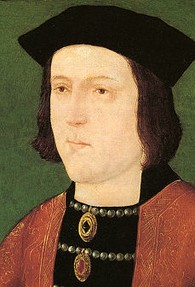 Despite his father on the side of the Lancastrians, evident by his father’s dislike for Richard, Duke of York, John joined the Yorkist cause. This worked out well for him as his second marriage was to Elizabeth of York, the daughter of Richard, Duke of York, and Cecily Neville. Elizabeth was the second daughter to survive and was born in France.
Despite his father on the side of the Lancastrians, evident by his father’s dislike for Richard, Duke of York, John joined the Yorkist cause. This worked out well for him as his second marriage was to Elizabeth of York, the daughter of Richard, Duke of York, and Cecily Neville. Elizabeth was the second daughter to survive and was born in France.
It made him brother-in-law to Edward IV and Richard III, which put him in good standing for the future. In fact, his close relationship with the latter king led to his own son being made heir presumptive after the death of Edward of Middleton, since Edward Plantagenet had been removed from line of succession due to his father’s actions.
The decision to join the York cause and the chance to marry Elizabeth also helped John gain his father’s title. After William’s arrest and banishment, his titles were forfeited to the crown. John didn’t get the chance to inherit them. However, Edward IV made him the 2nd Duke of Suffolk and the title passed onto his own son, also called John. He kept the title until 1492, when he died.
 |  |  |
| The Wars of the Roses: The Fall of th... Only $13.48 | The War of the Roses Only $13.99 | The Wars of the Roses |
John de la Pole Serves Henry VII of England
John de la Pole moved with the changing monarchy and supported Henry Tudor after the Battle of Bosworth, despite it meaning the death of his brother-in-law, Richard III
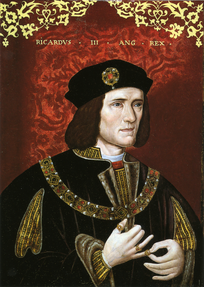 After the Battle of Bosworth, John’s life could have gone one of two ways. He could have refused to serve the new king, found himself tried for treason and executed or he could have served the new king loyally. John wanted the best life for his family and chose the latter. Of course, it helped that Henry married John’s niece, Elizabeth of York, in 1486. It is unclear how his wife, Elizabeth, accepted the new king. She possibly did it out of duty and understanding that her niece would be queen but it must have hurt knowing that the man had killed her brother and not allowed him a proper burial.
After the Battle of Bosworth, John’s life could have gone one of two ways. He could have refused to serve the new king, found himself tried for treason and executed or he could have served the new king loyally. John wanted the best life for his family and chose the latter. Of course, it helped that Henry married John’s niece, Elizabeth of York, in 1486. It is unclear how his wife, Elizabeth, accepted the new king. She possibly did it out of duty and understanding that her niece would be queen but it must have hurt knowing that the man had killed her brother and not allowed him a proper burial.
Despite John remaining loyal to Henry Tudor, four of his sons with Elizabeth didn’t and died because of it. One was executed by Henry VIII in 1513, one died while under arrest in the Tower of London sometime in 1539 and the other, Richard de la Pole, was killed on the battlefield during the Battle of Pavia in 1525.
John and Elizabeth’s oldest son, John, was killed during the Lincoln rebellion. He led the rebellion after finding Lambert Simnel, who was very much like Edward Plantagenet, who was held in the Tower of London at this time. He was killed at the Battle of Stoke in 1487.
The Children of John de la Pole and Elizabeth of York
John and Elizabeth had 11 children and surprisingly 11 survived to adulthood. It's just a shame their sons chose a different path and ended their lives young.
John and Elizabeth had 11 children but two of them died while young. Most died without any children of their own. The only one to have a child was John de la Pole during his marriage to Lady Margaret FitzAlan. They named him Edward but he died young and had no children. The de la Pole line through John and Elizabeth’s children died out.
John died between October 1491and 1492—there is no exact confirmation of the date. His wife survived him by over a decade, dying sometime in 1503. John was buried in Wingfield, Suffolk, where his father was also finally buried.
More articles on the War of the Roses
You might also like
An Overview of the Wars of the Roses Part TwoThe Medieval struggle for the English crown continues. The House of York and ...
Pilgrimage. A reviewBooks that are sources of knowledge and are blessed with beautiful pictures a...
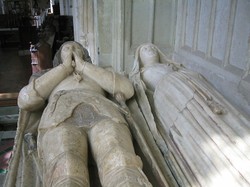











 Alternate History: What If Mary I Had a Child?on 01/26/2015
Alternate History: What If Mary I Had a Child?on 01/26/2015
 Francis II of France Dies: Mary, Queen of Scots Returns Homeon 12/05/2014
Francis II of France Dies: Mary, Queen of Scots Returns Homeon 12/05/2014
 Does Writedge Pay? Payment Proofon 12/03/2014
Does Writedge Pay? Payment Proofon 12/03/2014
 Alternate History: What If Lady Jane Grey Was Not Deposed?on 11/11/2014
Alternate History: What If Lady Jane Grey Was Not Deposed?on 11/11/2014
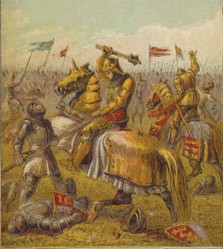
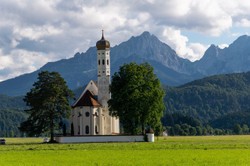
Comments
That's certainly true, Derdriu. You're welcome. I love the research and making it available so glad you enjoyed it.
aingham, Apparently diplomacy wasn't always part of the genetic heritage with the de la Poles. It's interesting to read about how much of a survivor John must have been since the bard warns us that "Hell hath no fury" like a woman scorned and scorning.
Diplomacy was not John's wife's niece's (Countess Margaret de la Pole) strong suit, even though bravery definitely was. It must have been quite an inspiring sight to see her give England's most dreaded executioner at the time a merry chase for his axe around the execution stage.
Thank you for making such an interesting life history available on Cyberland.
It is an interesting "what if". Would Richard III remained king, remarried (possibly to his niece) and had any sons? I think there's a story in there--I've seen a lot of "what if" stories recently.
Just imagine how differently history would have played out, if John and Margaret had remained married.